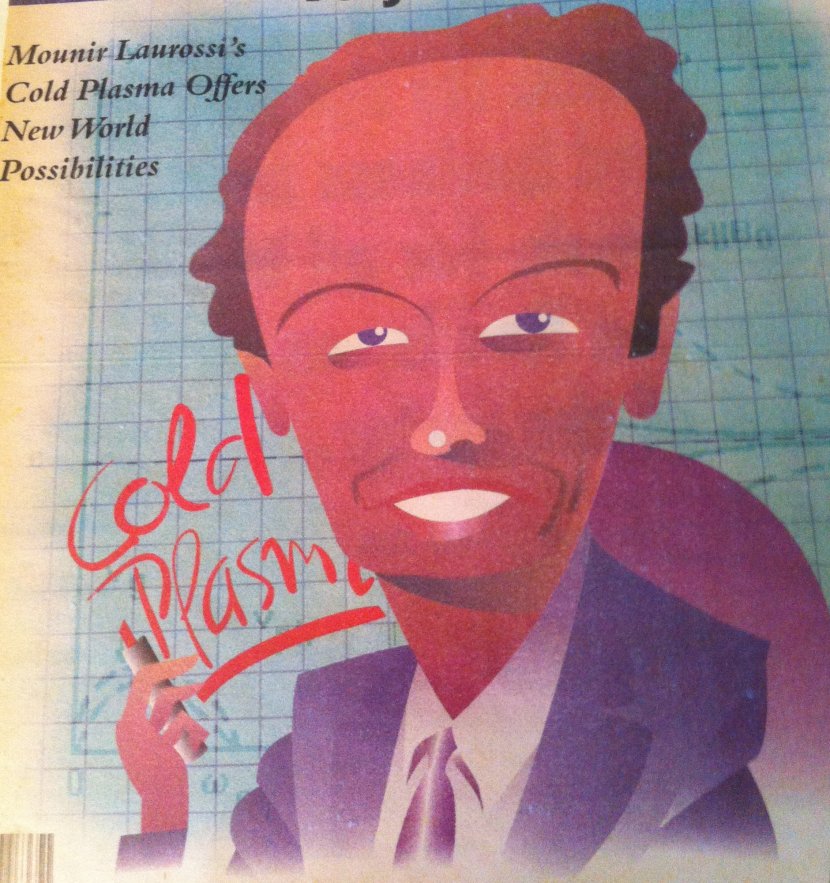The Applied Plasma Technology Laboratory (APTL) is part of ODU's Electrical and Computer Engineering Department as well as the Plasma Engineering & Medicine Institute (PEMI). PEMI, a research institute belonging to the Batten College of Engineering & Technology, is a facility dedicated to research on plasmas and their applications. Research topics at APTL include the generation of non-equilibrium, low temperature plasmas, characterization of plasmas using electrical and spectroscopic diagnostics methods, and material processing by plasmas. APTL also supports the research activities of PEMI on the biological and medical applications of plasmas.
Low Temperature Atmospheric Pressure Plasmas
Although some methods of generation of low temperature atmospheric pressure (LTP) have existed for several decades, it was only around the early 1990s that scientific research on the generation and characterization of LTP intensified. The use of the Dielectric Barrier Discharge (DBD) configuration was initially investigated by various research groups to produce large volume diffuse LTP. This was followed by the introduction of novel methods such as the Resistive Barrier Discharge (RBD), microdischarges, and plasma jets. The development of such practical and convenient means of LTP generation led a new "revolution" in plasma processing that included work on environmental applications, plasma-assisted combustion, and biomedical applications (Plasma Medicine). ODU's Applied Plasma Technology Laboratory (APTL) played a key role in many of these exciting new developments in plasma science.
Using Short Duration High Voltage Pulses to Generate Non-equilibrium Plasmas
The electron energy distribution in non-equilibrium discharges plays the most important role in defining the chemistry in the plasma. It is through electron impact excitation and ionization that the charged particles, excited species, and radicals are produced. Increasing the electrons number density and their energy translates to an increase in the production of reactive species and UV radiation emission. To achieve this increase of ionization and to extend the electron energy distribution to higher values, short high voltage pulses have been used. Using short duration pulses has the advantages of keeping a low average power and not substantially increasing the gas temperature. At APTL we have been using nanoseconds high voltage pulses for many years to produce large volume atmospheric pressure plasmas and plasma jets.
Low Temperature Plasma Jets
Low temperature plasma jets emitted in room air proved to be very useful for various plasma processing applications including in biomedicine. One of the great advantages of these plasma sources is the fact that they can generate stable and controllable thin columns of plasma outside the confinement of electrodes and into the surrounding environment. This is crucial in the case of medical applications. It was discovered that these jets are in fact trains of small volumes of plasma traveling at supersonic velocity. These fast propagating plasma fronts came to be known as "plasma bullets". Plasma bullets are vehicles delivering reactive species such reactive oxygen species (ROS) and reactive nitrogen species (RNS) to a target under treatment.
Plasma Diagnostics
Non-equilibrium plasmas exhibit a rich chemistry that makes them very valuable for various processes that require the production of reactive species under low temperature conditions. In order to characterize the plasma we apply various diagnostics methods that include electrical measurements (voltage, current, power), spectroscopic methods (emission and absorption spectroscopy), fast imaging techniques, probes, etc.
Plasma Medicine
Research on the biomedical applications of low temperature plasmas, a field known as "Plasma Medicine", started in mid-1990s and quickly grew into a full-fledged research endeavor. Today, work on plasma-aided wound healing, blood coagulation, dentistry, and cancer treatment is going on at several laboratories world-wide. Here at APTL support work for the research ongoing at ODU's Plasma Engineering & Medicine Institute (PEMI) is carried out. At PEMI the interactions of low temperature plasmas with biological cells are investigated both at the fundamental and applied levels. Applications in dentistry, decontamination/sterilization, wound healing and the destruction of cancer cells are actively pursued.



